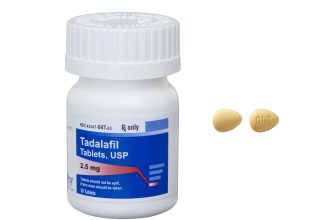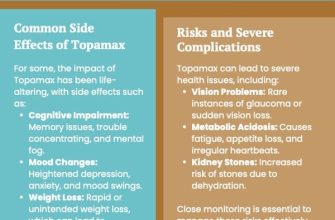Avoid long-term ciprofloxacin use whenever possible. Short courses are generally preferred to minimize risks. Your doctor should carefully weigh the benefits against potential side effects before prescribing prolonged treatment.
Extended ciprofloxacin therapy significantly increases the probability of developing serious side effects, including tendon damage (tendinitis and tendon rupture), peripheral neuropathy (nerve damage in the hands and feet), and Clostridium difficile infection (a severe intestinal infection). These risks are not trivial; they demand careful monitoring and alternative treatment strategies when feasible.
If long-term use is unavoidable, frequent monitoring of your health is absolutely necessary. Regular checkups, including blood tests and neurological examinations, help detect potential complications early. Open and honest communication with your physician is paramount; report any unusual symptoms immediately, no matter how minor they may seem. Remember, early detection is key to effective management.
Alternatives to ciprofloxacin should always be explored. Your doctor might suggest other antibiotics or treatment options depending on your specific condition. Collaborate closely with your healthcare provider to develop a treatment plan that prioritizes your safety while addressing your health needs.
- Ciprofloxacin Long Term Use: Risks and Considerations
- Understanding Ciprofloxacin’s Mechanism of Action
- Common Short-Term Side Effects of Ciprofloxacin
- Long-Term Side Effects: Tendon Damage and Rupture
- Symptoms to Watch For
- Risk Reduction and Management
- Recovery and Rehabilitation
- Peripheral Neuropathy and Ciprofloxacin’s Long-Term Impact
- Understanding the Risk
- Managing the Risk and Seeking Help
- Long-Term Effects
- The Role of Genetics in Ciprofloxacin Sensitivity
- Alternative Antibiotics for Long-Term Treatment
- When is Long-Term Ciprofloxacin Use Justified?
- Monitoring and Management of Long-Term Ciprofloxacin Therapy
- Monitoring for Adverse Effects
- Managing Potential Complications
- Lifestyle Recommendations
- Communication and Patient Education
Ciprofloxacin Long Term Use: Risks and Considerations
Avoid long-term Ciprofloxacin use whenever possible. Short courses are generally preferred. If prolonged treatment is absolutely necessary, carefully weigh the potential benefits against the risks.
Long-term Ciprofloxacin use significantly increases the risk of several serious adverse effects. These include:
- Tendinopathy: This involves inflammation and potential rupture of tendons, most commonly in the Achilles tendon. Pain, swelling, and limited range of motion are common symptoms. Immediate medical attention is needed if rupture is suspected.
- Peripheral Neuropathy: This condition affects nerves in the extremities, causing numbness, tingling, burning, and pain. Symptoms can be debilitating and persistent.
- Aortic Aneurysm and Dissection: While rare, this is a serious risk with Ciprofloxacin, particularly in older adults and those with pre-existing cardiovascular conditions. Immediate medical attention is crucial.
- Central Nervous System Effects: These can manifest as confusion, hallucinations, seizures, and other neurological symptoms. Close monitoring is needed.
- Increased risk of Clostridium difficile infection: Ciprofloxacin disrupts the gut microbiome, potentially leading to this serious infection causing severe diarrhea.
Before starting long-term Ciprofloxacin, discuss these risks with your doctor. They will consider your specific health situation and weigh the potential benefits against these considerable risks. Alternatives should be explored when possible. Regular monitoring of your health is vital throughout the treatment.
Here’s what to do if you experience any concerning symptoms:
- Stop taking Ciprofloxacin immediately.
- Contact your doctor or seek immediate medical attention.
- Describe your symptoms clearly and completely.
Remember, this information is for educational purposes and does not constitute medical advice. Always consult with a healthcare professional for any health concerns or before making any decisions related to your treatment.
Understanding Ciprofloxacin’s Mechanism of Action
Ciprofloxacin targets bacterial DNA replication. It achieves this by inhibiting two crucial enzymes: DNA gyrase and topoisomerase IV.
DNA gyrase is responsible for unwinding supercoiled DNA, allowing the replication process to begin. Ciprofloxacin’s interaction with this enzyme prevents DNA from unwinding. This directly stalls replication.
Topoisomerase IV is involved in separating replicated DNA strands after bacterial division. Ciprofloxacin’s inhibition of this enzyme leads to broken and damaged DNA, preventing cell division and ultimately leading to bacterial cell death.
This dual mechanism makes ciprofloxacin highly effective against a broad range of Gram-negative and some Gram-positive bacteria. However, it’s important to remember that prolonged exposure can lead to resistance development.
The precise molecular interactions are complex, involving the binding of ciprofloxacin to the active site of these enzymes. This binding alters their shape and prevents them from performing their functions. Resistance often emerges due to mutations in these enzymes, changing the binding site and preventing ciprofloxacin from interacting effectively.
Common Short-Term Side Effects of Ciprofloxacin
Ciprofloxacin, while effective, can cause several short-term side effects. These typically resolve once you stop taking the medication. However, it’s crucial to report any concerning symptoms to your doctor.
Gastrointestinal issues are common. You might experience nausea, diarrhea, or vomiting. Mild stomach upset can often be managed with over-the-counter antacids. Persistent or severe diarrhea requires immediate medical attention.
Many individuals report feeling generally unwell, experiencing fatigue or weakness. Adequate rest and hydration can often alleviate these symptoms.
Headache is another frequently reported side effect. Simple pain relief measures like over-the-counter pain medication may help.
| Side Effect | Frequency | Management |
|---|---|---|
| Nausea | Common | Antacids, small frequent meals |
| Diarrhea | Common | Hydration, consult doctor for persistent or severe diarrhea |
| Vomiting | Less common | Hydration, consult doctor if persistent |
| Fatigue | Common | Rest, hydration |
| Headache | Common | Over-the-counter pain relievers |
Less common, but still possible side effects include dizziness, insomnia, and skin rash. If you experience any of these, consult your healthcare provider.
This information is not exhaustive, and individual experiences vary. Always follow your doctor’s instructions and report any concerns.
Long-Term Side Effects: Tendon Damage and Rupture
Ciprofloxacin, while effective for many bacterial infections, carries a risk of tendon problems, particularly with prolonged use. The risk increases with age and in individuals with certain medical conditions, like kidney problems or rheumatoid arthritis. Specifically, tendinitis (inflammation of a tendon) and tendon rupture are serious concerns. These issues can affect any tendon, but Achilles tendon rupture is a relatively common complication.
Symptoms to Watch For
Pain, swelling, and stiffness in a tendon are key warning signs. These symptoms may arise suddenly or gradually worsen over time. If you experience sudden, sharp pain in a tendon, particularly the Achilles tendon, seek immediate medical attention. Delaying treatment can lead to more severe injury and longer recovery times. Don’t ignore subtle symptoms; early detection improves outcomes.
Risk Reduction and Management
Consult your doctor before starting a long-term Ciprofloxacin course, especially if you have a history of tendon problems or are older than 60. Regular monitoring of your tendon health, including reporting any pain or discomfort to your physician, is recommended. Maintaining a healthy lifestyle, including proper nutrition and exercise (avoiding strenuous activities that overstress tendons), can help minimize risk. In some cases, your doctor may recommend alternative antibiotics to reduce the risk of tendon complications.
Recovery and Rehabilitation
Treatment for tendon damage depends on the severity of the injury. It may range from rest and physical therapy for mild tendinitis to surgery for a complete rupture. A physical therapist can provide guidance on specific exercises to aid rehabilitation and strengthen the affected tendon. The recovery period varies depending on the injury’s severity and your overall health.
Peripheral Neuropathy and Ciprofloxacin’s Long-Term Impact
Consult your doctor immediately if you experience numbness, tingling, or pain in your extremities, especially after prolonged Ciprofloxacin use. These could be symptoms of peripheral neuropathy, a serious side effect linked to fluoroquinolone antibiotics like Ciprofloxacin.
Understanding the Risk
The risk of peripheral neuropathy increases with higher doses and longer duration of Ciprofloxacin treatment. Studies show a correlation, but the exact mechanism isn’t fully understood. Some individuals are simply more susceptible than others.
- Increased risk factors: Age over 60, diabetes, kidney disease, and pre-existing nerve conditions.
- Symptoms: Burning, shooting, stabbing, or prickling sensations; weakness; muscle loss; problems with balance and coordination.
Managing the Risk and Seeking Help
While Ciprofloxacin is a powerful antibiotic, weigh the benefits against the potential risks, especially with long-term use. Your doctor can explore alternative antibiotic options if appropriate.
- Open communication: Discuss your concerns and medical history with your physician before starting or continuing Ciprofloxacin treatment.
- Regular check-ups: Monitor for early signs of neuropathy and report any symptoms promptly.
- Alternative treatments: Explore non-fluoroquinolone antibiotics if your condition allows.
- Supportive care: Physical therapy and pain management strategies may help alleviate symptoms if neuropathy develops.
Long-Term Effects
Peripheral neuropathy caused by Ciprofloxacin can be persistent, even after the antibiotic is discontinued. Recovery varies greatly depending on factors like the severity of the neuropathy, individual health, and promptness of treatment.
Early detection and intervention are critical to improving the chances of recovery or minimizing long-term consequences. Don’t hesitate to seek medical attention if you suspect Ciprofloxacin-induced peripheral neuropathy.
The Role of Genetics in Ciprofloxacin Sensitivity
Genetic variations influence how your body processes Ciprofloxacin. Specific genes affect drug metabolism and transport, impacting efficacy and the risk of side effects. For example, variations in genes coding for enzymes like CYP1A2 and UGT2B7 can alter Ciprofloxacin’s metabolism. CYP1A2 influences how quickly your body breaks down the drug; faster metabolism might lead to lower drug levels, potentially reducing effectiveness. Conversely, slower metabolism could increase drug levels, raising the risk of adverse reactions.
UGT2B7 impacts how your body conjugates Ciprofloxacin, a process that helps eliminate it. Genetic differences in this gene may alter elimination rates, similarly affecting both efficacy and side effect risk. Furthermore, variations in genes associated with drug transporters, such as ABCB1 (P-glycoprotein), can influence the drug’s absorption and distribution. This means some individuals might absorb less Ciprofloxacin, leading to reduced efficacy, while others might experience higher concentrations in specific tissues, potentially leading to toxicity.
Personalized medicine approaches are emerging, utilizing genetic testing to guide Ciprofloxacin prescription. This allows doctors to tailor dosage and monitor patients more effectively based on their individual genetic profiles. While not yet standard practice, pharmacogenomic testing may help predict response and minimize adverse events, particularly for long-term Ciprofloxacin use. Research continuously identifies new genes and their roles, refining our understanding of this complex interaction. Talk to your doctor about genetic testing to understand how your unique genetic makeup could impact your response to Ciprofloxacin.
Alternative Antibiotics for Long-Term Treatment
Consult your doctor to explore alternatives. They will assess your specific needs and medical history before suggesting a suitable option. This is crucial for safe and effective treatment.
Doxycycline, a tetracycline antibiotic, offers broad-spectrum coverage and may be considered for certain long-term infections. However, long-term use can carry risks including tooth discoloration in children. Your physician can help weigh the benefits and risks.
Minocycline, another tetracycline, provides similar coverage to doxycycline but with a potentially different side effect profile. Your doctor will consider this in their assessment.
Trimethoprim-sulfamethoxazole (Bactrim, Septra) is a commonly used antibiotic for various bacterial infections. It might be suitable for long-term use in specific cases, but potential side effects, including kidney issues, need careful monitoring.
For specific infections, your doctor may consider Macrolides (like azithromycin or clarithromycin) or Rifampin. Each has its own set of possible side effects and suitability varies widely depending on the infection type and your individual health. Remember, proper dosage and monitoring are vital.
Always discuss potential interactions with other medications you are currently taking. Your doctor will manage your treatment plan and address any concerns you may have about long-term antibiotic use.
When is Long-Term Ciprofloxacin Use Justified?
Long-term ciprofloxacin use should be reserved for serious, life-threatening infections where alternative treatments have failed or are unsuitable. This includes specific situations like certain complicated infections involving bones and joints (osteomyelitis), some lung infections (pneumonia caused by specific bacteria), and severe urinary tract infections resistant to other antibiotics.
Doctors carefully weigh the risks of long-term use, including potential tendon damage, against the severity of the infection. This decision-making process involves regular monitoring of the patient’s condition and response to treatment. Frequent blood tests and other assessments are common practice to watch for adverse effects.
Specific conditions requiring consideration might involve patients with cystic fibrosis, or those with compromised immune systems battling chronic bacterial infections. However, treatment decisions are always individualized and depend heavily on the specific bacteria identified, the patient’s overall health, and the presence of other conditions.
Before initiating long-term ciprofloxacin therapy, physicians should explore all other antibiotic options to minimize the risk of antibiotic resistance and side effects. The duration of treatment is always kept as short as possible, while ensuring effective eradication of the infection. This might involve targeted therapies and close collaboration with specialists.
Remember: this information is for general knowledge and does not constitute medical advice. Always consult a healthcare professional for diagnosis and treatment of any health problem.
Monitoring and Management of Long-Term Ciprofloxacin Therapy
Regularly monitor complete blood counts (CBCs) and liver function tests (LFTs) every 3 months during long-term ciprofloxacin use. Adjust frequency based on individual patient response and potential side effects.
Monitoring for Adverse Effects
Closely observe patients for tendon pain, particularly in the Achilles tendon. Assess for signs of peripheral neuropathy, including numbness, tingling, or pain in the extremities. Promptly report any new or worsening symptoms to the prescribing physician. Consider alternative antibiotics if significant side effects develop.
Managing Potential Complications
Maintain adequate hydration. Patients should drink plenty of water to minimize kidney stress. Regularly assess renal function with serum creatinine levels. Prophylactic measures against Clostridium difficile infection may be necessary in susceptible patients. This could involve adjusting medication or using protective agents.
Lifestyle Recommendations
Encourage a balanced diet rich in calcium and vitamin D to support bone health. This is especially critical for patients at risk of osteoporosis or fracture. Recommend regular weight-bearing exercise, as appropriate for the individual’s physical condition, to further improve bone health. Instruct patients to report any signs of bone pain or weakness immediately. Advise patients against sun exposure, and to wear protective clothing. Consider measuring bone mineral density (BMD) to assess risk.
Communication and Patient Education
Provide clear, concise instructions on medication administration, potential side effects, and the importance of ongoing monitoring. Emphasize the need for immediate reporting of any concerning symptoms. Ensure patient understanding of the rationale for long-term therapy and the necessity for adherence to the prescribed regimen. Follow up regularly to assess treatment efficacy and tolerability.










